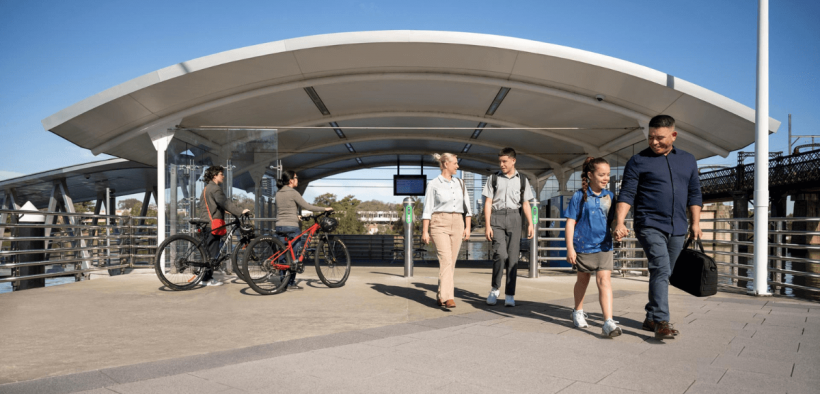NSW Gov unveils future transport strategy
Share

The NSW Government has unveiled its latest future transport strategy, revealing to the public new technological changes to the state’s transport systems.
Premier Dominic Perrottet, who was keen to show his government at the cutting edge of transport changes, revealed that the new strategy focuses on building the state’s transport services around its citizens.
The 50-year blueprint outlines a desire to “stabilise” Greater Sydney’s traffic levels, free road space for essential uses such as freight and service at the expense of single-occupant private vehicles.
It aims to turn train stations into destinations, shorten travel time significantly, and utilise robotic dogs to inspect pipes and other areas too dangerous for humans.
Walking, wheelchairs, e-bikes and e-scooters may be considered first in the allocation of road user space, potentially increasing the width of footpaths and the number of 24-hour bus lanes.
An opportunity to “reduce congestion and improve travel choices” through long-term reform of “user contributions across the road and public transport networks” is also mentioned.
While cars will be the last priority when designing new transport systems, it doesn’t mean a congestion tax is on the way.
An Australian report by 18 industry and academic experts released in May recommended a congestion tax and fuel efficiency standards to address transport’s increasing share of the country’s emissions.
But the NSW Premier said his government had no plans for a congestion tax.
“We’ve set out very clearly in our electric vehicle strategy. As we move into a future of electric vehicles, then naturally you’ll move into a (road user charge) system,” he said.
“That’s the future. You pay a tax today – stamp duty and fuel excise.”
Cities Minister Rob Stokes said 40 per cent of trips were to run errands but people mostly had no option but to use private vehicles.
“About two million trips each day in Sydney alone by motor vehicle are less than two kilometres,” he said.
“If we can make it safer and more efficient for people to use public transport or even walk or cycle, we’re saving people money, we’re making our transport more efficient and we’re making our roads run better.”
The strategy brings forward to 2050 a commitment for zero road trauma while the transport department wants net zero emissions by 2035.
With AAP
Eliza is a content producer and editor at Public Spectrum. She is an experienced writer on topics related to the government and to the public, as well as stories that uplift and improve the community.










Today’s Pick
11th Annual Aus Goverment Data Summit
April 1, 2025
7th Annual NZ Government Data Summit
May 7, 2025
3rd Public Sector Comms Week
May 14, 2025
Subscribe
We send emails,
but we do not spam
Join our mailing list to be on the front lines of healthcare , get exclusive content, and promos.
AI appointment Australia Australian boost boosts business businesses covid-19 cyber cyber attack cyber security cybersecurity data data breach data management defence Digital employment enhance enhances fraud funding governance government grants infrastructure Innovation Lockdown management new zealand NSW NZ online privacy public Public Sector queensland renewable energy scams security Social Media Technology telecommunications victoria
-

Understanding and building your digital strategy
Digital Government, Opinion
-

Featured Leader: Jamie Morse on multi-channel strategies for communication
Communications, Featured Leader
-

Featured Leader: Tegan Tembe of NSW Treasury on creating solid planning strategies and processes
Featured Leader
-

Wirraka Maya Health Service improves patient care with My Health Record
Learning
Show More-

Effects of ineffective communication in the workplace
Communications, Personal Development
-

7 ways you can enhance your personal development skills
News, Personal Development
-

5 advantages of working in the public sector
News, Personal Development, Professional Development
-

7 causes of communication issues in the workplace
Communications, News, Personal Development
Show MoreLast Viewed